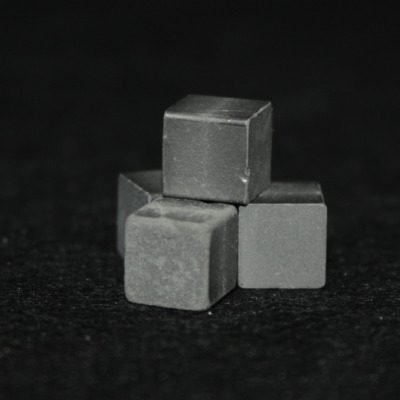In the vast expanse of space exploration, every component plays an important role in ensuring mission success and the safety of astronauts. Among these components, tungsten cubes have emerged as key elements in various aerospace technologies. With their unique properties and versatility, tungsten cubes contribute significantly to the advancement of space exploration endeavors.
Table of Contents
Radiation Shielding
One of the primary applications of tungsten cubes in space exploration is radiation shielding. Beyond Earth’s protective atmosphere, space travelers are exposed to harmful cosmic radiation that can pose serious health risks. Tungsten’s high density makes it an ideal material for shielding against these radiation hazards. Tungsten cubes strategically placed within spacecraft or habitats provide effective protection, minimizing the exposure of astronauts to harmful radiation during prolonged space missions.
Thermal Management
In the extreme temperatures of space, effective thermal management is essential to maintain the integrity of spacecraft systems and ensure the comfort and safety of crew members. Tungsten cubes exhibit excellent thermal conductivity, allowing them to efficiently dissipate heat generated by onboard equipment or absorbed from external sources. By incorporating tungsten cubes into thermal management systems, aerospace engineers can regulate temperatures effectively and prevent overheating or freezing of critical components.
Structural Integrity
The structural integrity of spacecraft is paramount for withstanding the harsh conditions of space travel, including micro-gravity, thermal cycling, and mechanical stresses. Tungsten cubes, known for their strength and durability, contribute to the structural stability of spacecraft components and modules. Whether used as structural reinforcements or as part of composite materials, tungsten cubes enhance the resilience and longevity of aerospace structures, ensuring mission success and crew safety.
Propulsion Systems
Tungsten’s high melting point and resistance to corrosion make it an attractive material for various propulsion systems employed in space exploration. Tungsten cubes can be integrated into thruster, rocket nozzles, and other propulsion components to withstand the intense heat and pressure encountered during launch and maneuvering in space. Additionally, tungsten’s density enables efficient fuel storage and distribution, optimizing the performance of propulsion systems and extending mission capabilities.
Electronics and Communication
Reliable electronics and communication systems are essential for maintaining connectivity and control during space missions. Tungsten cubes, with their electrical conductivity and resistance to electromagnetic interference, play an important role in the design and construction of aerospace electronics. From circuit boards to antenna components, tungsten cubes enhance the performance and reliability of critical communication and navigation systems, facilitating seamless communication between spacecraft and mission control.
Payload Protection
Tungsten cubes are also instrumental in protecting sensitive payloads carried onboard spacecraft, such as scientific instruments or exploration equipment. By incorporating tungsten shielding layers or enclosures, aerospace engineers can shield delicate instruments from cosmic radiation, thermal fluctuations, and mechanical shocks, ensuring their functionality and accuracy in the challenging environment of space.
Additive Manufacturing
The advent of additive manufacturing technologies has revolutionized the production of aerospace components, offering unprecedented design flexibility and efficiency. Tungsten cubes can be incorporated into additive manufacturing processes to create complex geometries and high-performance structures tailored to specific mission requirements. Additively manufactured tungsten components offer weight savings, cost-effectiveness, and rapid prototyping capabilities, driving innovation in aerospace technology development.
Expanding on the significance of tungsten cubes in space exploration, it is essential to delve deeper into their role in enabling long-duration missions beyond Earth’s orbit. As space agencies and private companies set their sights on crewed missions to the Moon, Mars, and beyond, the challenges of deep space travel become increasingly apparent. Tungsten cubes address many of these challenges by providing robust solutions for spacecraft design, operation, and crew protection.
One important aspect of deep space exploration is the mitigation of galactic cosmic radiation (GCR) and solar particle events (SPE), which pose significant health risks to astronauts. Tungsten cubes, with their dense atomic structure, excel at absorbing and deflecting ionizing radiation, thereby shielding crewed habitats and spacecraft interiors from harmful radiation exposure. By incorporating tungsten shielding into spacecraft architecture, aerospace engineers can create safer environments for astronauts during extended missions to distant destinations.
Moreover, as human presence in space becomes more prolonged and self-sustained, the need for reliable and efficient life support systems becomes paramount. Tungsten cubes contribute to these systems by facilitating effective thermal management and energy distribution within spacecraft habitats. By regulating temperatures and optimizing energy utilization, tungsten-based thermal management systems ensure the comfort and well-being of crew members while minimizing resource consumption and environmental impact.
Furthermore, tungsten cubes play an important role in the development of advanced propulsion technologies essential for deep space exploration. Whether powering next-generation ion thrusters, nuclear thermal propulsion systems, or solar sails, tungsten-based components enhance the efficiency, durability, and performance of propulsion systems operating in the vacuum of space. Explore raw tungsten for sale. By harnessing the unique properties of tungsten, aerospace engineers can propel spacecraft farther and faster, opening up new frontiers for exploration and discovery.
Final thoughts
Tungsten cubes play a multifaceted role in advancing aerospace technology and enabling ambitious space exploration missions. From radiation shielding and thermal management to structural reinforcement and propulsion systems, tungsten cubes contribute to the safety, efficiency, and success of space missions. As humanity continues to push the boundaries of space exploration, the versatility and reliability of tungsten cubes will remain indispensable in overcoming the challenges of the final frontier.
















